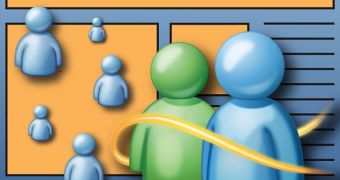Just ahead of MIX09 I told you that Microsoft was gearing up to make available the Windows Live Messenger Web Toolkit. And in fact, as of the first day of the conference, the Windows Live Messenger Web Toolkit is now live and available to developers. The toolkit is essentially a collection of resources including a set of controls and libraries, designed to integrate Windows Live Messenger with a website. Microsoft is stressing the capacity of the Windows Live messenger Web Toolkit to enhance social networking websites by enabling users to connect with each other as well as with the people that built the website.
“For Web site owners the Windows Live Messenger Web Toolkit provides Web sites with three core benefits,” revealed Steve Gordon, Microsoft lead software design engineer. “User acquisition: your Web site visitors can help you build your audience on the fly by inviting their friends to your site through instant messaging. Deeper engagement: the toolkit allows people on your Web site to easily chat with their Messenger friends or others on your site, keeping them their longer. zeturn traffic: bringing people back to your Web site is difficult when the only weapon in your arsenal is email. Using Messenger functionality you can break through the inbox chatter and remind people why your service is so great.”
In the video embedded at the bottom of this article you will be able to see James Senior, Microsoft technical evangelist, demonstrate the Windows Live Messenger Web Toolkit. But the software giant is emphasizing that not just web developers and website owners can take advantage of the toolkit. Ultimately, the end users are the main beneficiaries, as they will be able to IM with their friends even from a new website, as well as engage people with similar interests.
“Web developers can choose the level of customization by using the pre-built and skinnable Web Bar control, using the 16 modular UI Controls, or building the entire experience from the ground up using the Windows Live Messenger Library,” Gordon added. “We have many cool samples in multiple languages (C#, VB.NET, PHP, Ruby, Java, Python and Perl) that show you how simple it is to integrate the Windows Live Messenger Web Toolkit. So, no matter what your style, you’ve got the help you need to kick start your development and get these new capabilities on your Web site in a snap.”
The simplest way to integrate Windows Live Messenger Web Toolkit into your website is to visit the tool's official page and follow the instructions presented there. Developers will not only get guidance from Microsoft but also the sample-code necessary to allow users to leverage the Redmond company's instant messaging client via their website. Moreover, Microsoft is also offering no less than 16 JavaScript/HTML controls that can be customized via CSS but also tweaked by taking advantage of the Windows Live Messenger Library, for those developers that would like a more hands-on experience.

 14 DAY TRIAL //
14 DAY TRIAL //